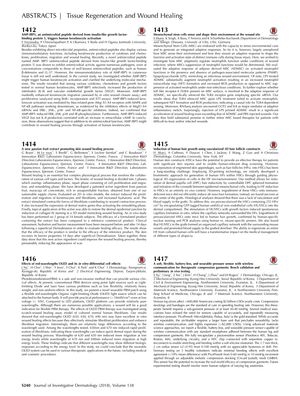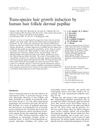Induction of Human Hair Growth Using Vascularized 3D Hair Follicle Constructs
human hair follicles human skin constructs 3D-printing technology dermal papilla cell epidermal-mesenchymal cells hair follicle induction immunodeficient mice prevascularized human skin constructs GFP-tagged human umbilical vein endothelial cells capillary networks human-specific nuclear staining PCR analyses alopecia HFs HSCs DPC HUVECs PCR

TLDR Researchers created a 3D-printed skin model that grew human hair when grafted onto mice by improving blood supply to the grafts.
In the 2018 study, researchers developed a method to generate human hair follicles (HFs) within human skin constructs (HSCs) using 3D-printing technology to organize cells in a biomimetic fashion. They restored dermal papilla cell (DPC) hair inductivity and initiated crosstalk between epidermal-mesenchymal cells, leading to HF induction ex vivo. However, initial grafts onto immunodeficient mice did not induce hair growth due to necrosis from a lack of vasculature. To overcome this, the team prevascularized the HSCs by incorporating GFP-tagged human umbilical vein endothelial cells (HUVECs) at a density of 255 HFs/cm2, which formed capillary networks in vitro. When these prevascularized HSCs were grafted onto mice, they successfully induced human hair growth, as confirmed by human-specific nuclear staining and PCR analyses. The HUVECs also formed organized capillary networks with mouse vessels, enhancing blood supply to the grafts. This advancement suggests a potential transformative impact on treating various types of alopecia.





